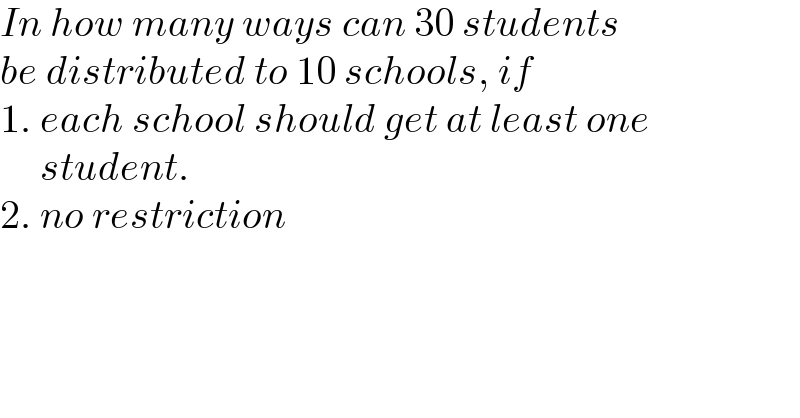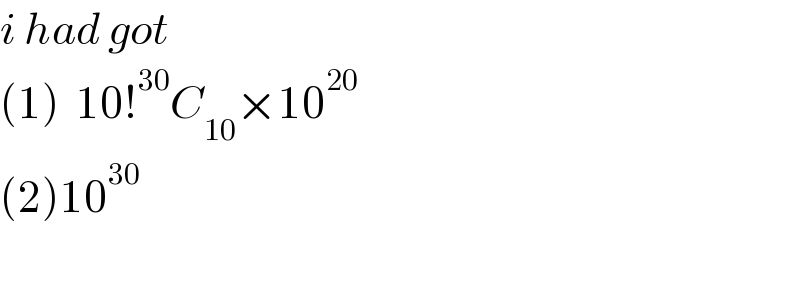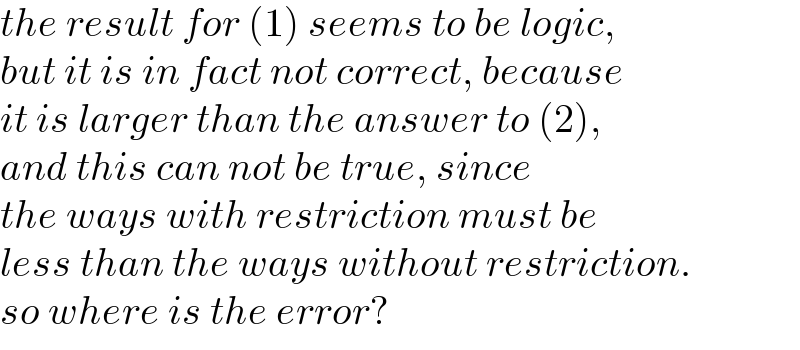
Question and Answers Forum
Previous in Permutation and Combination Next in Permutation and Combination
Question Number 158529 by mr W last updated on 11/Nov/21

Answered by cortano last updated on 06/Nov/21

Commented by mr W last updated on 07/Nov/21

Commented by ajfour last updated on 06/Nov/21

Commented by mr W last updated on 06/Nov/21

Commented by mr W last updated on 11/Nov/21

